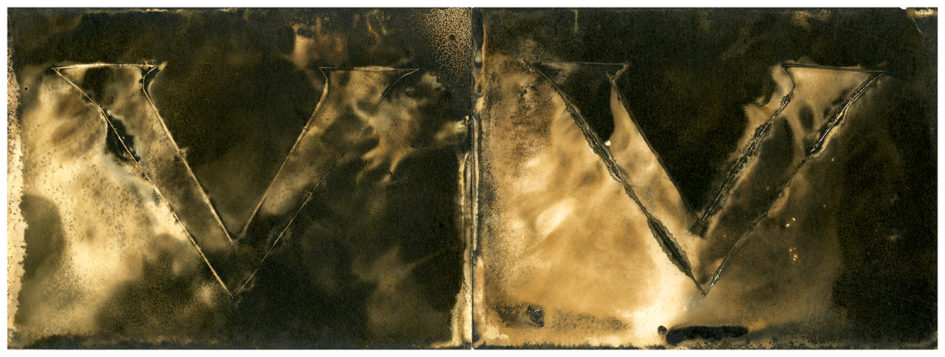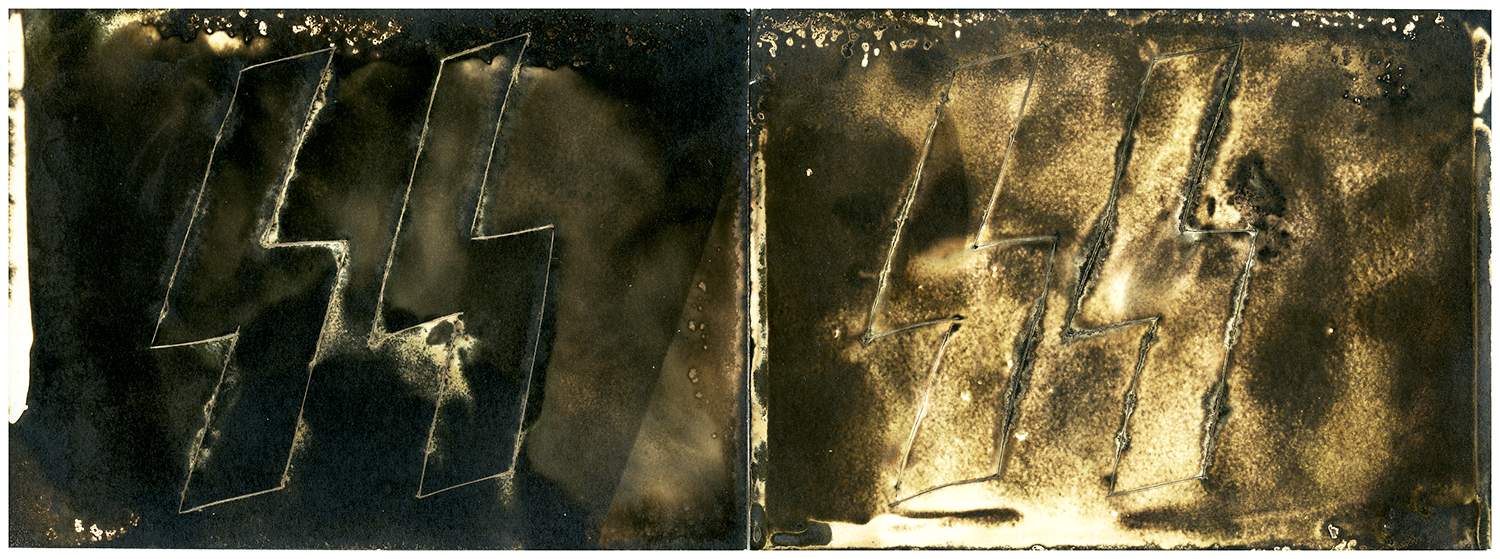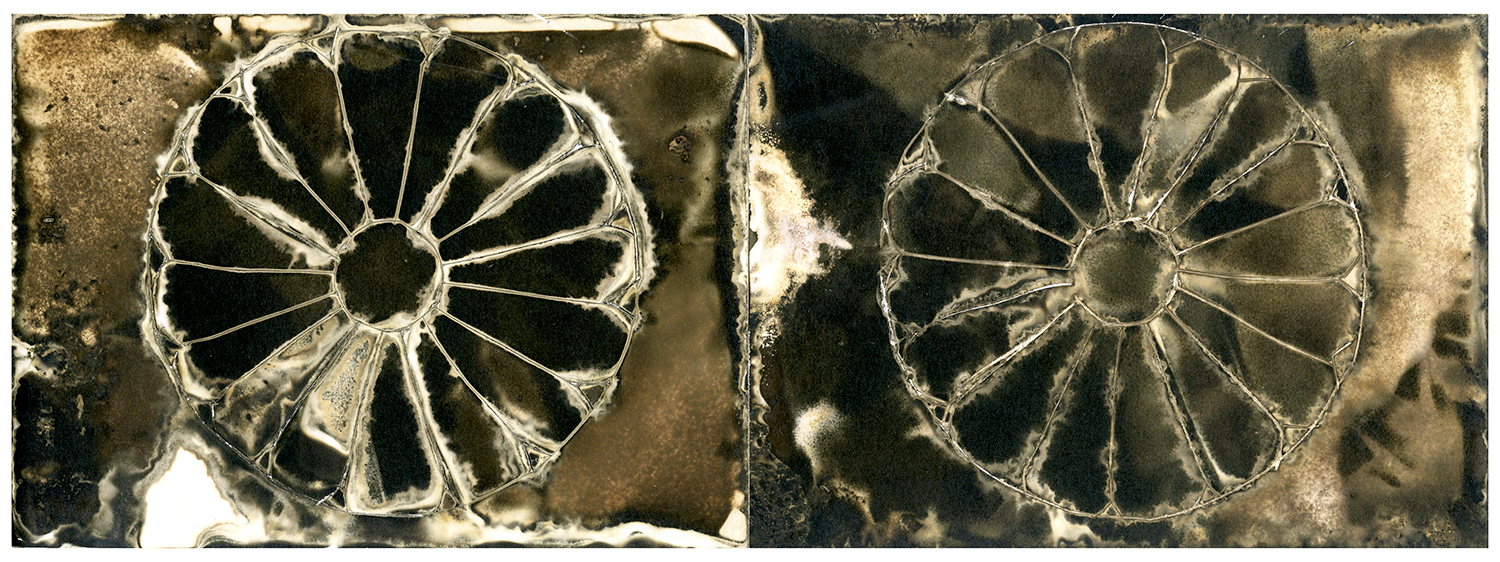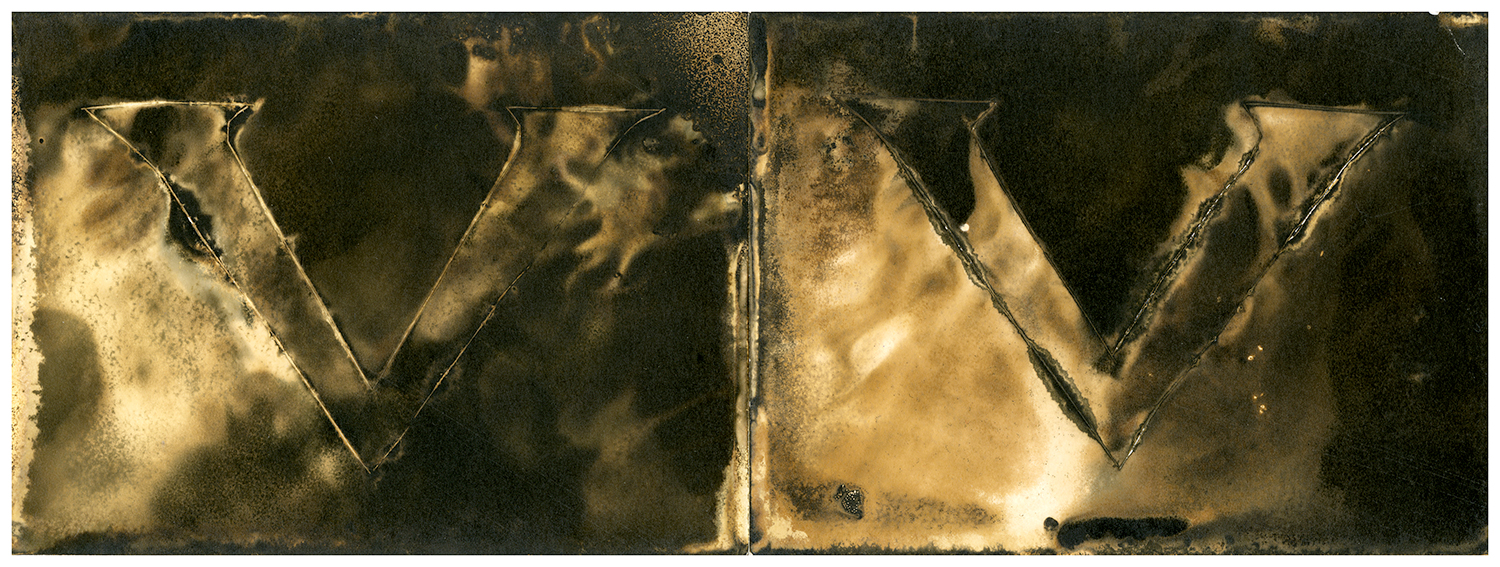Shock Art has never inspired me.
Certainly, without artists constantly testing the boundaries of what is and isn’t acceptable, modern art would become stagnant. It is a necessary element to keep the cogs moving, inspiring generations of artists to tell their stories in more gripping and striking ways. However, I have never been inspired to create work utilizing disturbing or offensive imagery because I have always focused on technique and narrative rather than on raw response. I come back to Serrano’s Piss Christ whenever I think of Shock Art and often wonder where the emphasis is – on the audience’s response or its suggested narrative. Does the offensive nature of this piece eclipse intent? As time passes and we look back on Serrano’s work in 100 years, will this piece only be remembered for how it offended or will the artist’s intent survive along with the image?
In previous posts, I discussed the intimate connection I have with my ongoing Chemigram project. It was only a matter of time till the emblems I use for this project went from mere insignia and devices to raw symbols of hate. Thus far, I have attempted to remain neutral, aspiring to show both sides of each emblem to underline the layers of complexity behind worldwide conflict. For nearly two months, I have debated sharing a particular new print, fearing that the image may be poorly received. I found myself concerned that it may become disconnected from my intent (and thereby only exist as a recreation of a hate symbol). I worried that people may see me as an artist that thinks it appropriate to ignorantly create with symbols of hate, not seeing the intent behind the image. It has certainly been difficult to remain neutral and to see the other side of the story when dealing with a symbol as potent and universally recognized as a symbol of hate groups – both historically and still today. I find myself reflecting on my earlier beliefs that I’d never create work that could so easily offend – but without approaching these symbols, the intended project narrative would be incomplete:
Emblem and Artifice intends to shed light on the forgotten symbols that defined this horrific global conflict, focusing on the dual nature behind each symbol. History often is a one-sided story, ignoring how signs of nationalistic pride elicited responses full of fear, while symbols of hate often served as signs of hope for others. To truly understand the complexity of war, one must be willing to see the other side and understand what led people to champion the defeated. As much as I would love to avoid creating with the Schutzstaffel symbol, it is a potent chapter that defines this conflict much more than other “safer” symbols. The elephant in the room remains, however – I cannot bring myself to create with the emblem of the Third Reich… yet.
Other symbols have been much easier to create with and I continue to find new ones to add through my research and networking. Reaching out to a fellow photographer friend, Ryota Kajita, I have started to balance my series more by seeking out symbols that define the conflict in the Pacific.
As well, my wife’s recent interest in 1940s history and dress inspired me to create a new Chemigram to represent Victory. Even the concept of victory is undeniably two-sided – and so the “V” represents a fitting conclusion:
Although I am far from completed with this series, I am happy to see the progress thus far, with 12 images completed. As always, conversation, critique and comments are always welcome.




Leave a Reply